Humanoid Robots

For decades, humanoid robots have been the stuff of science fiction. However, recent advancements in artificial intelligence and robotics have made them a reality. Humanoid robots are now being use in a variety of industries from retail to healthcare and even space exploration. This blog post will explore the capabilities and potential of humanoid robots, their current applications, and the possibilities for future development. We’ll also look at the ethical implications of these machines, both from an industrial standpoint and from a consumer’s point of view. Finally, we’ll discuss the potential for humanoid robot applications outside of their current scope. Read on to discover what makes these robotic wonders tick!
What are humanoid robots used for?
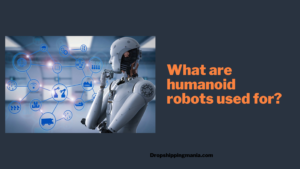
Humanoid robots are built to resemble humans in both appearance and function. They are use for a variety of tasks, including search and rescue missions, space exploration, and assisting humans in everyday tasks.
Humanoid robots have many advantages over other types of robots. They can navigate complex terrain, climb stairs, and enter tight spaces. They are also able to communicate with people and work alongside them.
One of the most important uses for humanoid robots is helping humans in hazardous or dangerous situations. For example, they can sent into buildings that have been damaged by an earthquake to help locate survivors. They can also used to diffuse bombs or enter areas that are too dangerous for humans.
Another important use for humanoid robots is assistance in space exploration missions. They can used to carry out tasks that would be too difficult or dangerous for humans, such as repairing a satellite or collecting samples from an asteroid.
Humanoid robots are also increasingly being use to help people in their everyday lives. For example, they can assist with tasks such as vacuuming the floor or providing directions. In the future, it is likely that humanoid robots will play an even larger role in our lives as they become more advanced and capable of performing more complex tasks.
Which is an example for humanoid robot?
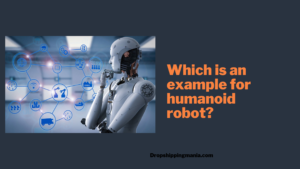
One example of a humanoid robot is the Geminoid HI-1. This robot was develop by Hiroshi Ishiguro, a professor at Osaka University. The Geminoid HI-1 is a life-size replica of Professor Ishiguro himself. It is uncanny how closely this robot resembles a human being, right down to the smallest details like skin texture and hair color.
Another example of a humanoid robot is ASIMO, developed by Honda. ASIMO is an acronym for Advanced Step in Innovative Mobility. This robot is design to resemble a human child and stands just over four feet tall. ASIMO is capable of many humanlike actions, such as walking, running, and climbing stairs.
Is Elon Musk making a humanoid robot?
Yes, Elon Musk is making a humanoid robot. The robot, named “Bambi”, is being develop by his company, Neuralink. The goal of the project is to create a robot that can interact with humans and perform tasks such as assisting in household chores or providing companionship.
The team working on Bambi includes some of the world’s leading roboticists and AI experts, who are using cutting-edge technology to create a truly lifelike robot. So far, they have succeeded in creating a robot that can walk and talk like a human. The next step is to endow Bambi with more advanced intelligence and abilities.
Musk believes that humanoid robots will eventually become ubiquitous in society, and he is determined to make Neuralink’s Bambi one of the leading examples of this new technology. He has high hopes for what Bambi can achieve, saying that “the possibilities are endless”. Ultimately, he envisions a future where robots are integrate into everyday life, performing tasks such as cleaning up the house or looking after children.
So far, progress on the project has been steady, and Musk is confident that Bambi will be ready for public debut within the next few years. When it does finally launch, it promises to be a truly groundbreaking achievement in robotics.
How robots work ?
Robots are machines that can programmed to carry out a set of actions. They are usually made up of a series of moving parts, sensors, and computers.
Robots are increasingly becoming a part of our everyday lives. They vacuum our floors, build our cars, and even help surgeons perform delicate operations. But how do they work?
At their most basic level, robots are machines that can programmed to carry out a set of actions. They are usually made up of a series of moving parts, sensors, and computers.
The first step in understanding how robots work is to understand the difference between manual and autonomous robots. Manual robots are those that require a human operator to control them. This could be as simple as using a remote control to move the robot around or more complex systems where the operator wears special gloves that allow them to control the robot’s movements directly. Autonomous robots, on the other hand, don’t require any direct input from a human operator. Instead, they use sensors and algorithms to navigate their surroundings and accomplish their tasks.
One of the most common types of autonomous robot is the Roomba vacuum cleaner. These little devices use sensors to detect obstacles in their path and then adjust their route accordingly. They also use algorithms to determine the most efficient way to clean your floor – something that would be impossible for a human operator to do!
Who is the first human robot?
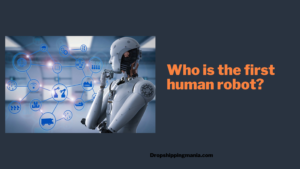
The first human robot is a robot design to resemble a human. Humanoid robots are design to perform tasks that are difficult or impossible for humans to do, such as lifting heavy objects or working in hazardous environments.
What are humanoid robots made of?
Today’s humanoid robots are made of a variety of materials, including metals, plastics, and composites. They also have sensors and actuators (motors) to give them movement and a degree of control over their environment.
The most advanced humanoid robots can even equipped with artificial intelligence (AI), which allows them to interact with their surroundings in increasingly human-like ways.
What are the advantages of humanoid robots?
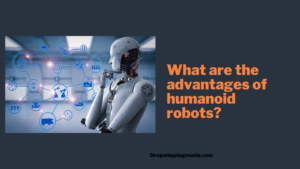
Humanoid robots are becoming increasingly popular due to their many advantages. Some of the most notable advantages of humanoid robots include:
1. Increased versatility and functionality – Humanoid robots are able to perform a wider range of tasks than traditional non-humanoid robots. This increased versatility makes them ideal for use in a variety of settings, including homes, businesses, and hospitals.
2.Improved safety – Humanoid robots are design with safety in mind. Their human-like form allows them to interact with humans without posing a danger to them. This makes them ideal for use in dangerous environments, such as nuclear power plants or chemical factories.
3. Enhanced social interaction – Humanoid robots are able to communicate and interact with humans on a more personal level than traditional non-humanoid robots. This improved social interaction can make them more effective at performing certain tasks, such as customer service or home caregiving.
How old is Sophia robot?
Sophia robot is a humanoid robot developed by Hanson Robotics. She was first activated on April 19, 2015. As of June 2019, she is three years old.
Sophia has designed to look like a human female, and her face can express many human emotions. She is also capable of human-like conversation thanks to artificial intelligence. Sophia loves learning new things, and enjoys being around people.
What are 3 things robots can do better than humans?
1. They can process and respond to information faster than humans.
2. They can work tirelessly for long periods of time without rest or need for food or water.
3. They can lift and move objects much heavier than any human could hope to lift or move on their own.
What are 3 disadvantages of robots?
1. They can be expensive to maintain.
2. They may not be as reliable as humans.
3. They can be dangerous if they malfunction.
Can you buy a humanoid robot?
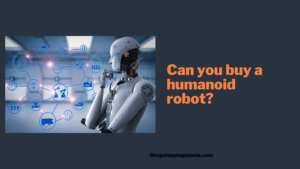
There are a few different types of humanoid robots that you can buy, but they are mostly design for research and development purposes rather than general consumer use. However, there are some companies that are starting to develop humanoid robots for personal and domestic use. These types of robots are still in the early stages of development and are not widely available yet, but they hold a lot of promise for the future.
Who makes humanoid robots?
Humanoid robots are create by a number of companies and research institutions around the world. Some of the leading companies in the field include Boston Dynamics, Honda, and iRobot. Several academic institutions are also involve in research and development of humanoid robots, including MIT and Carnegie Mellon University.
The creation of humanoid robots is motivate by a variety of factors. For some, the goal is to create machines that can perform tasks that are difficult or dangerous for humans. Others hope that humanoid robots will provide insights into human cognition and behavior. Additionally, many see humanoid robots as a step towards creating truly intelligent artificial beings.
What are the 3 types of robots?
The three types of robots are industrial robots, domestic robots, and service robots. Industrial robots are use in factories for tasks such as welding and fabricating. Domestic robots are use in homes for tasks such as vacuuming and laundry. Service robots are use in public places for tasks such as security and cleaning.
Which is the most beautiful robot?
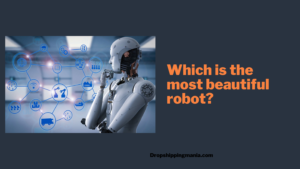
There are many different types of robots, each with their own unique features and abilities. So, it’s tough to say which is the most beautiful robot. However, we think the humanoid robot is a strong contender for the title.
Humanoid robots are design to resemble humans, and they are often use in research and development projects. They have a wide range of capabilities, including the ability to walk and move like humans. Additionally, some humanoid robots have features that make them even more lifelike, such as facial expressions and voice recognition.
What makes humanoid robots so special is that they offer a glimpse into the future of robotics. As technology advances, we expect humanoid robots to become even more lifelike and capable. So, it’s exciting to think about what the most beautiful robot might look like in the future!
For more informative article visit this link:


